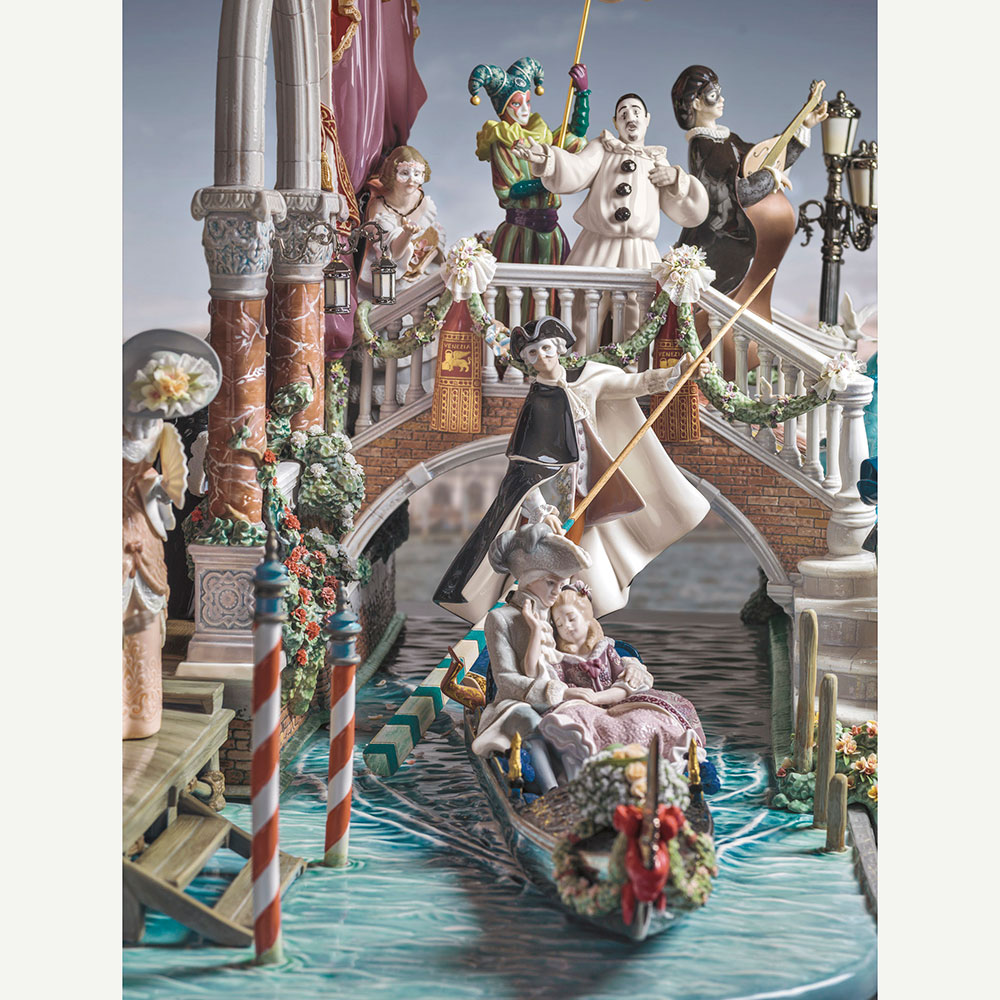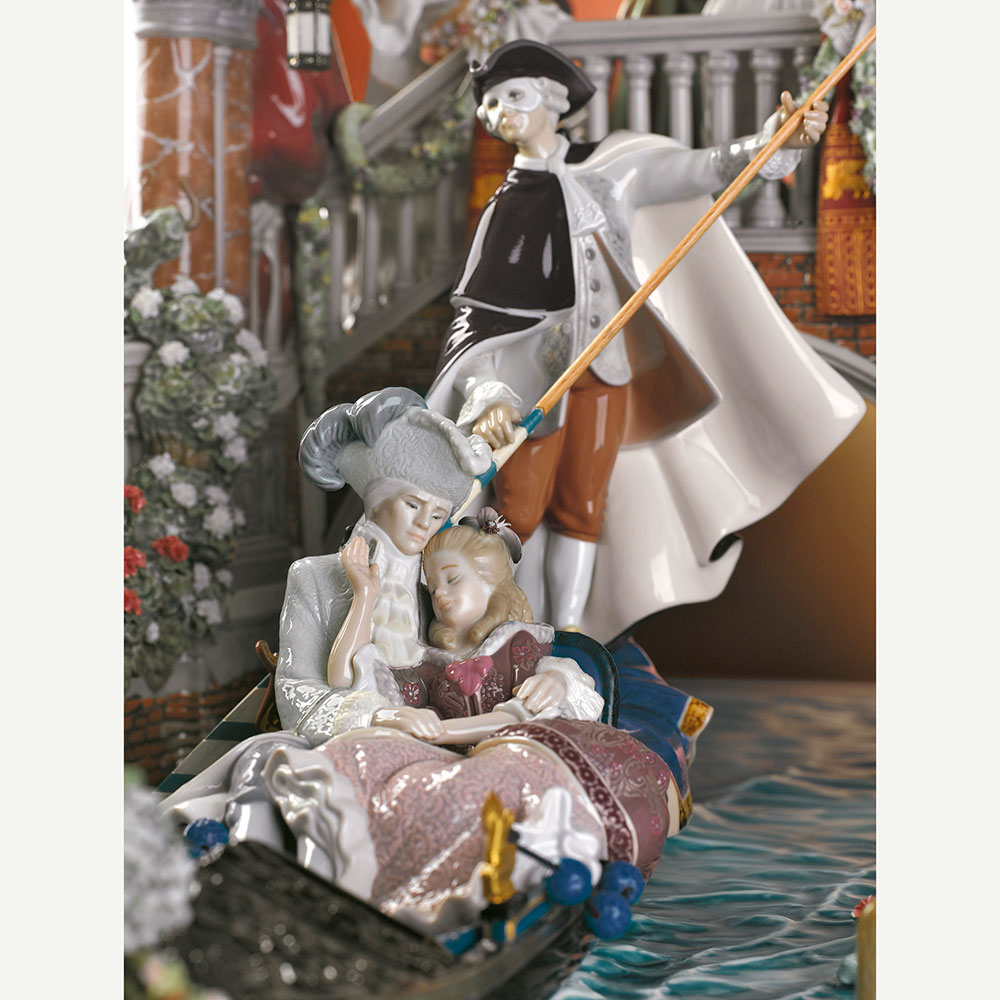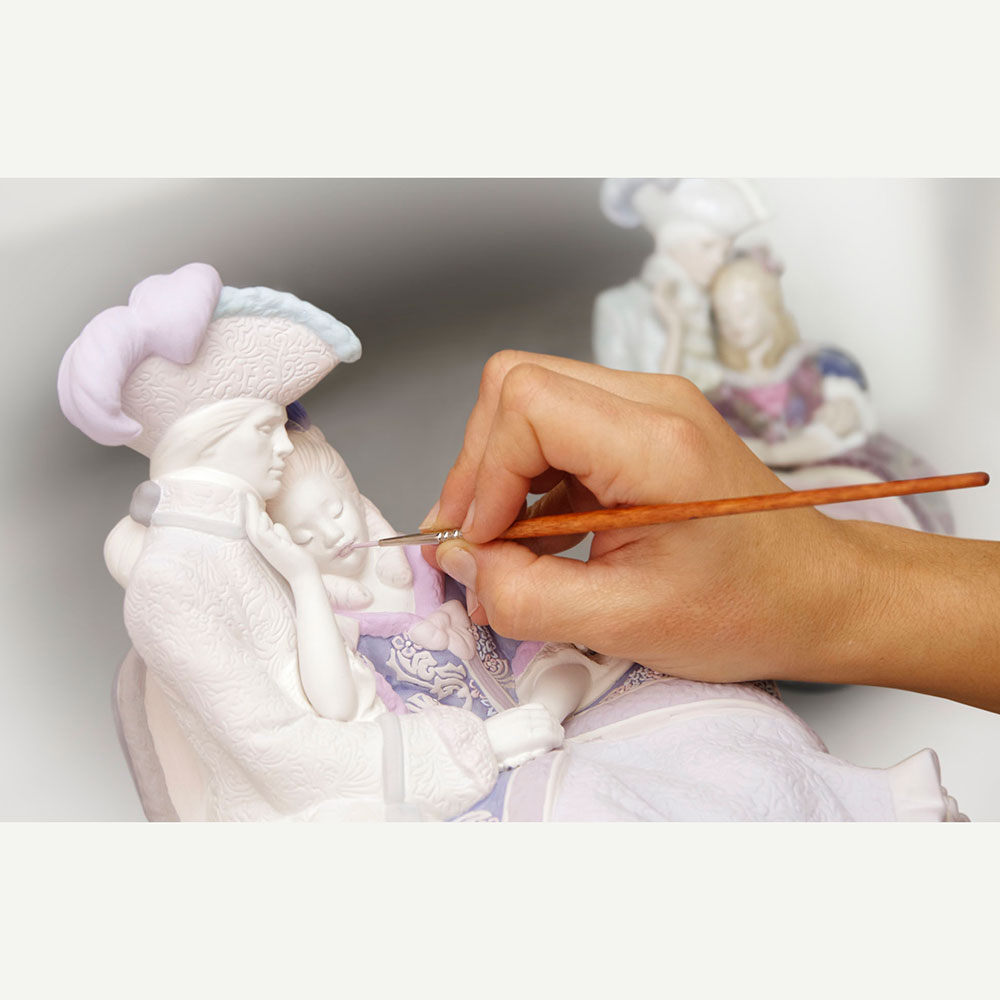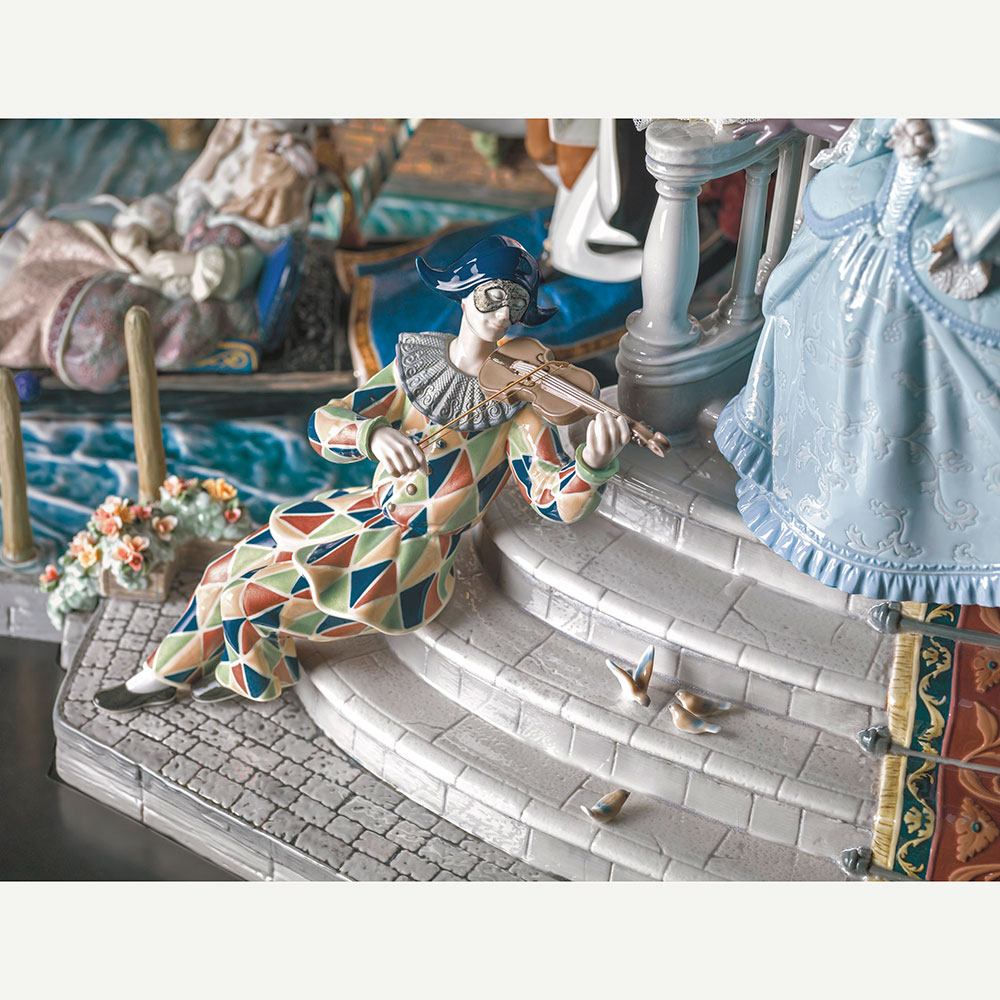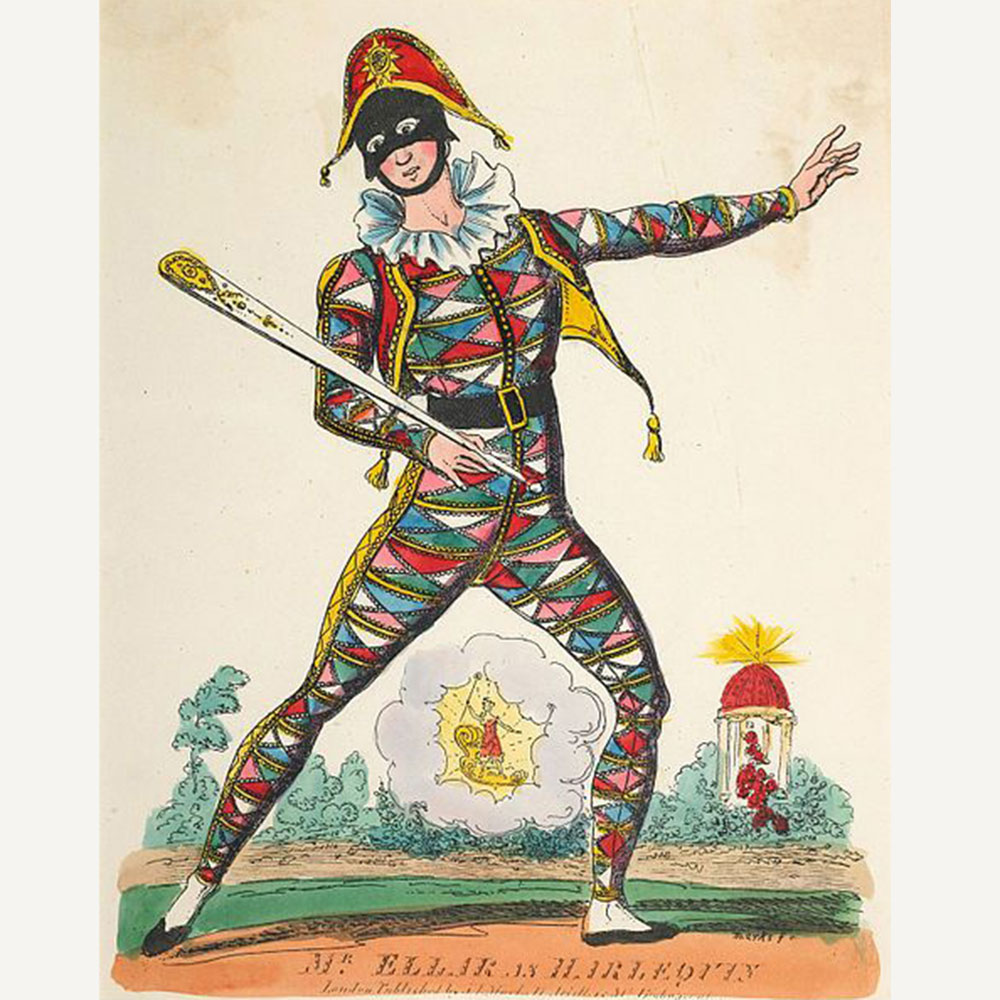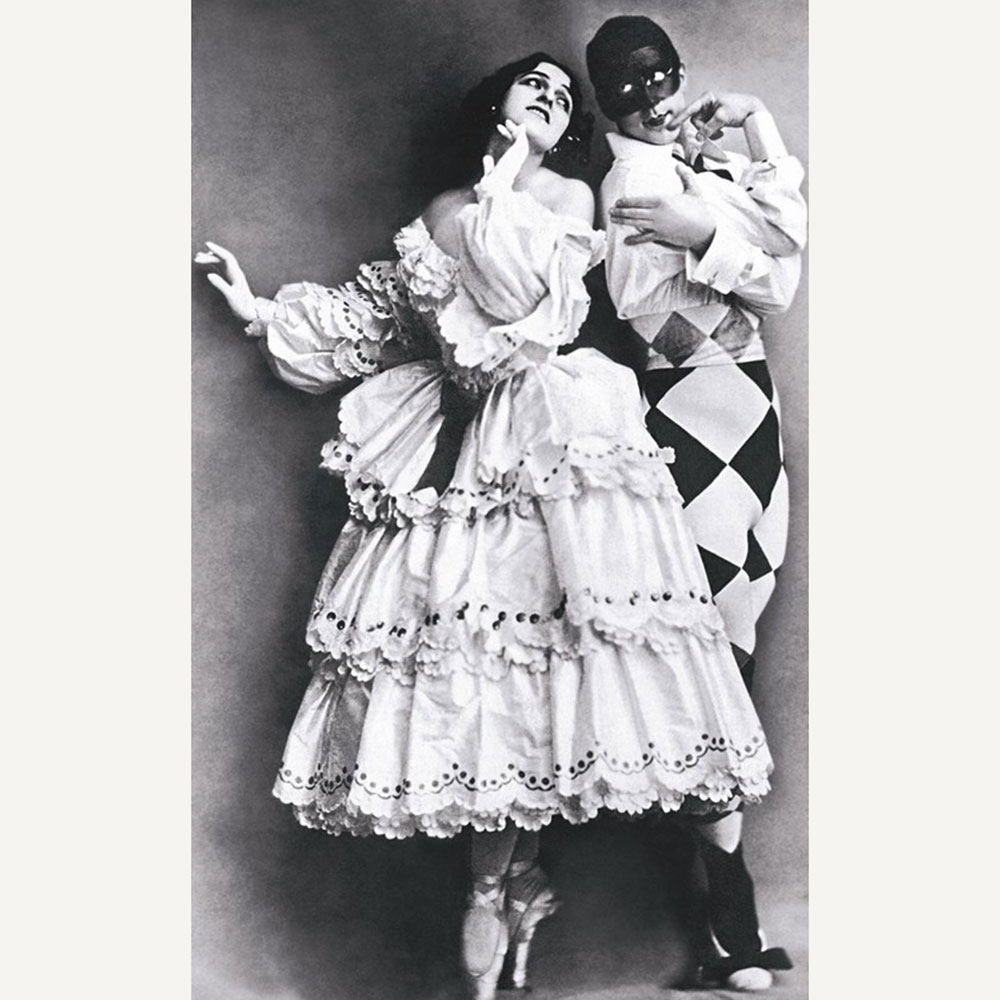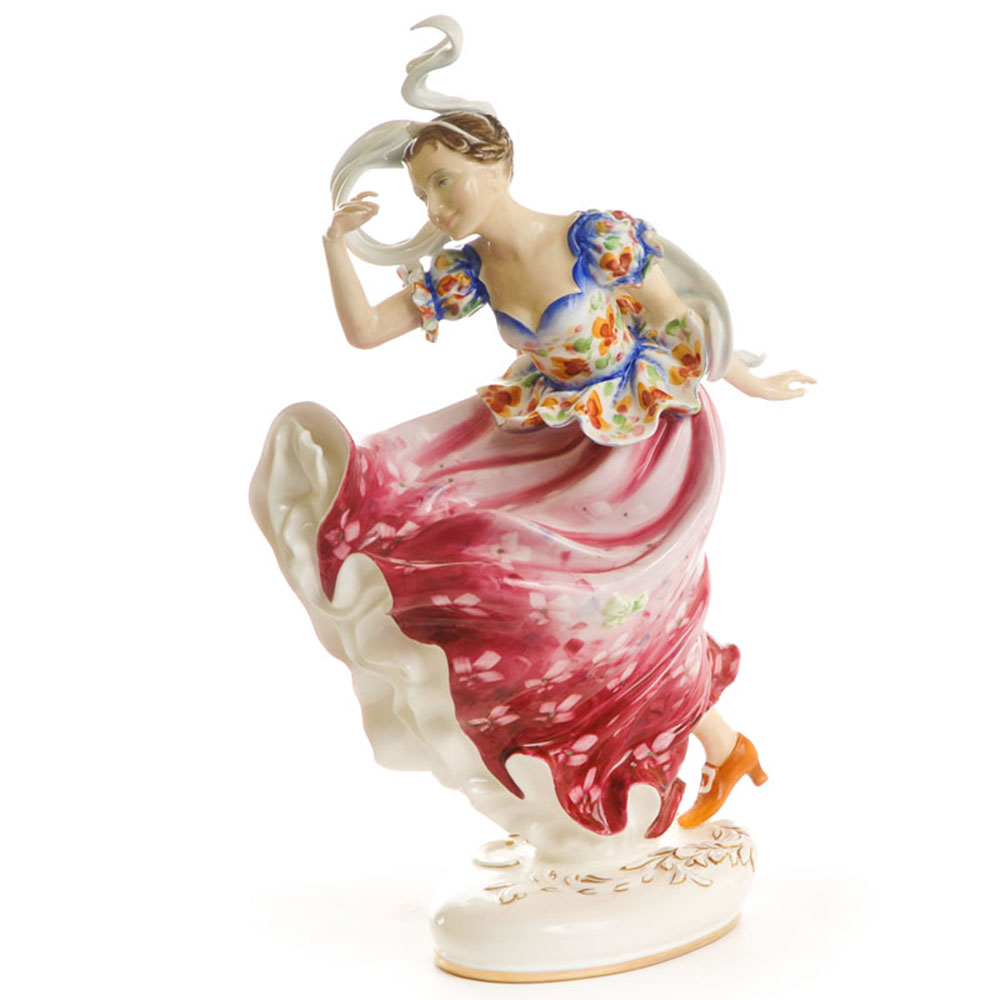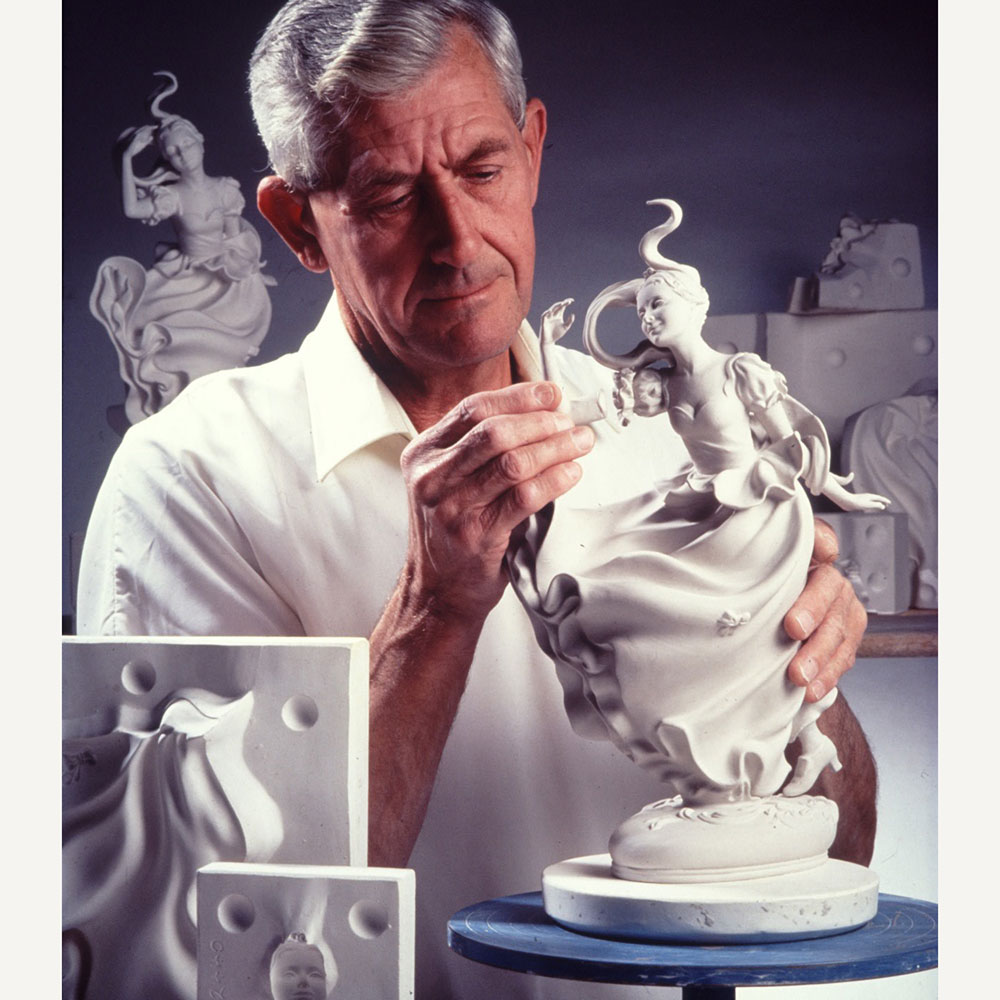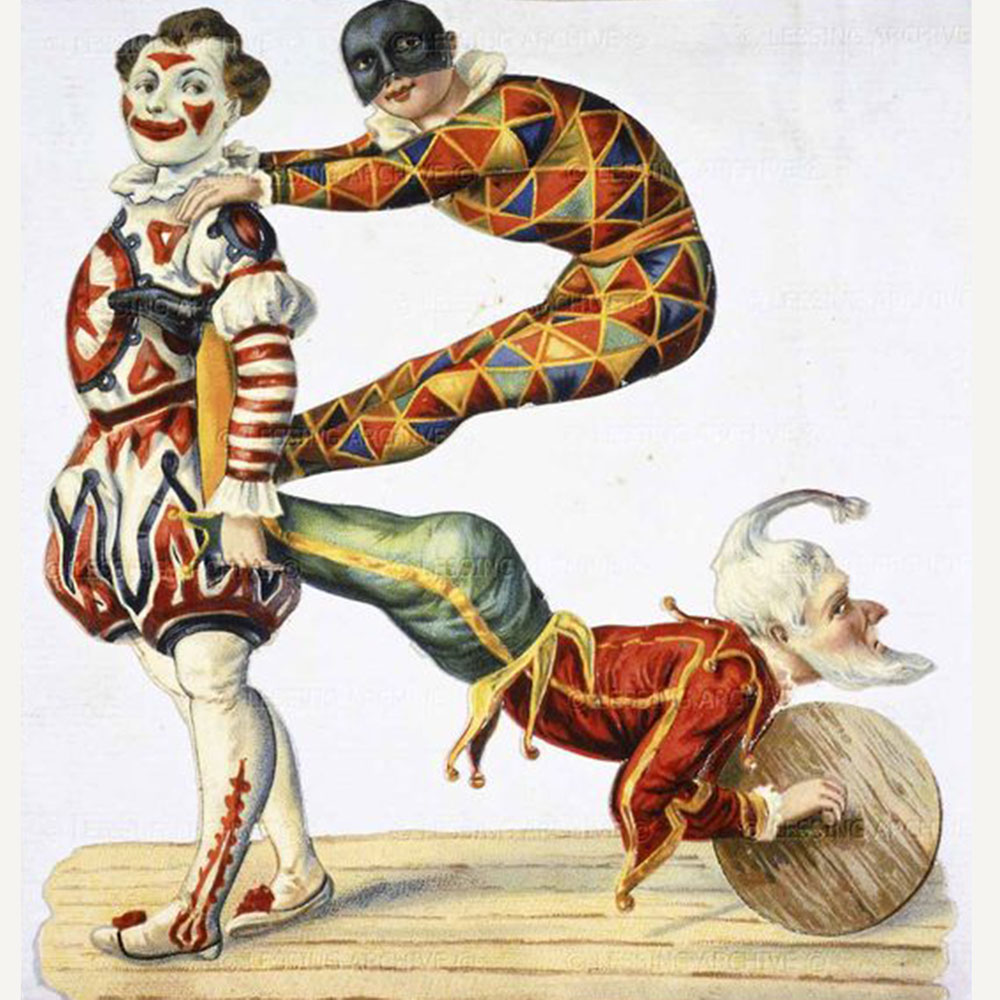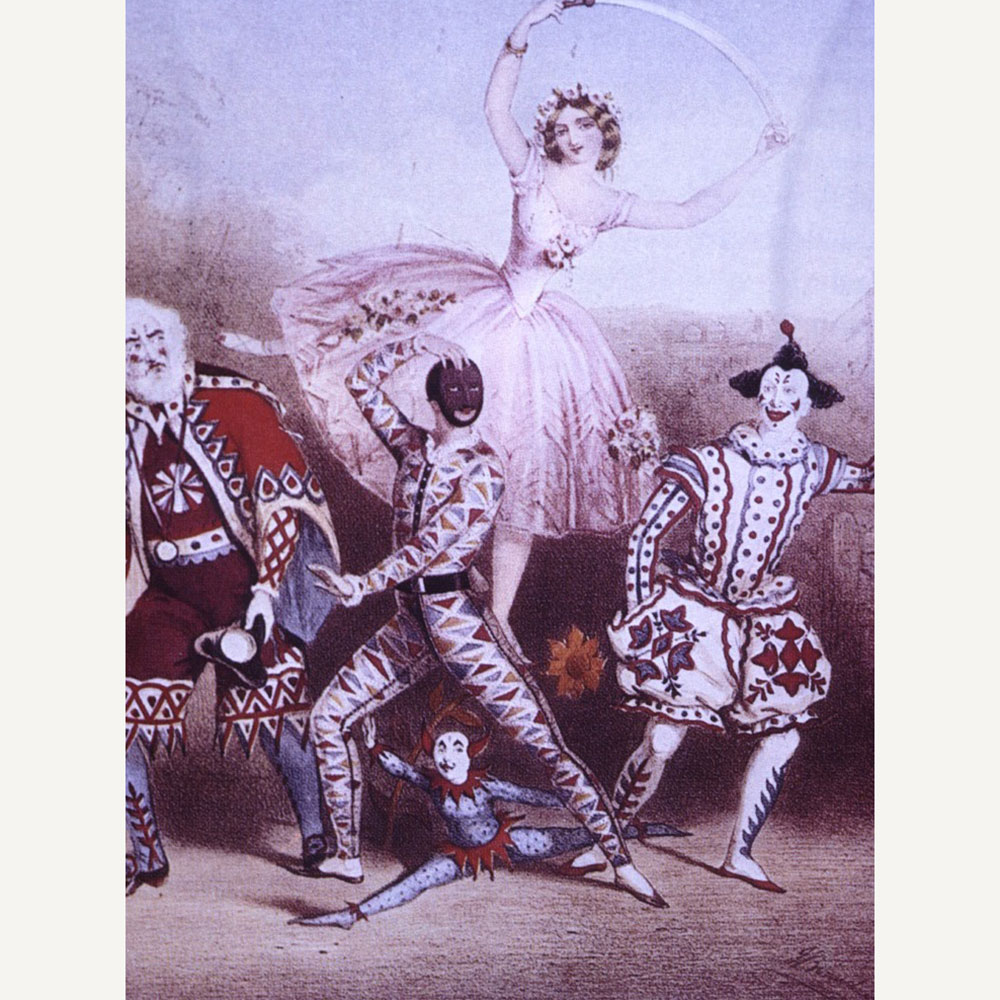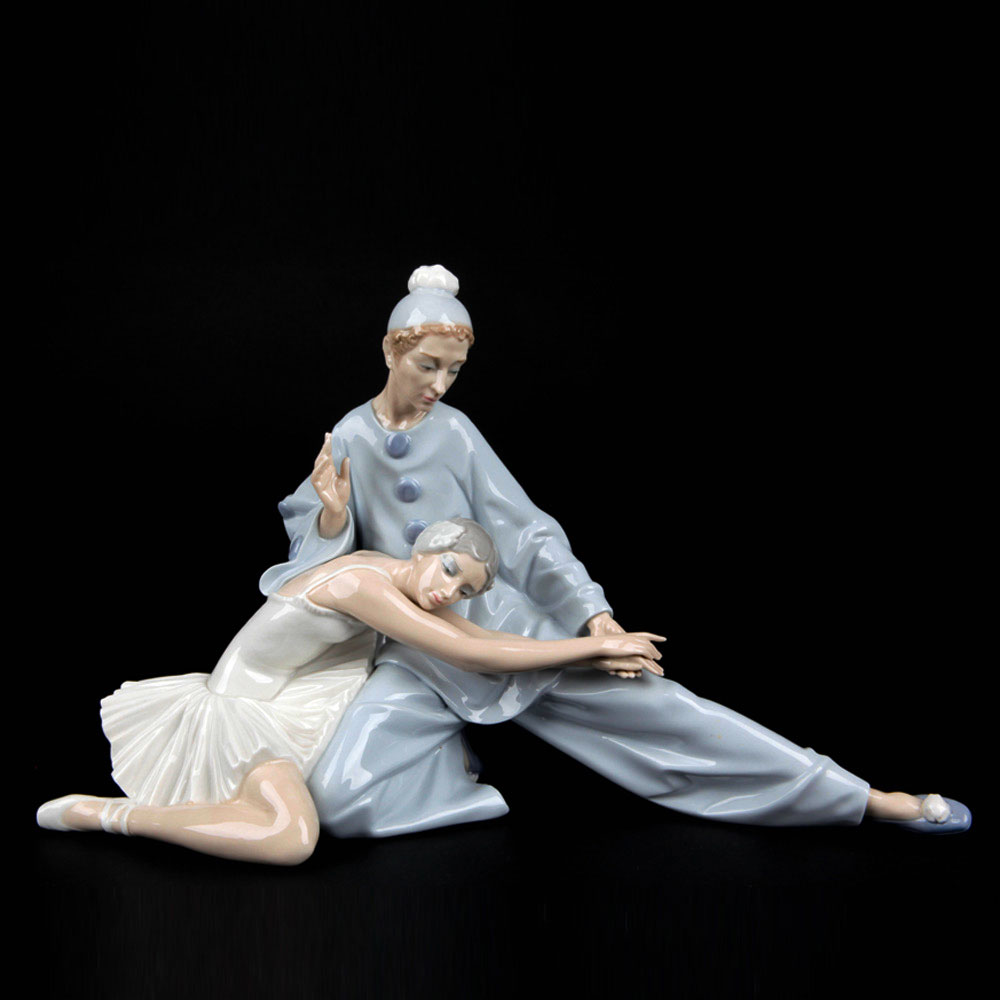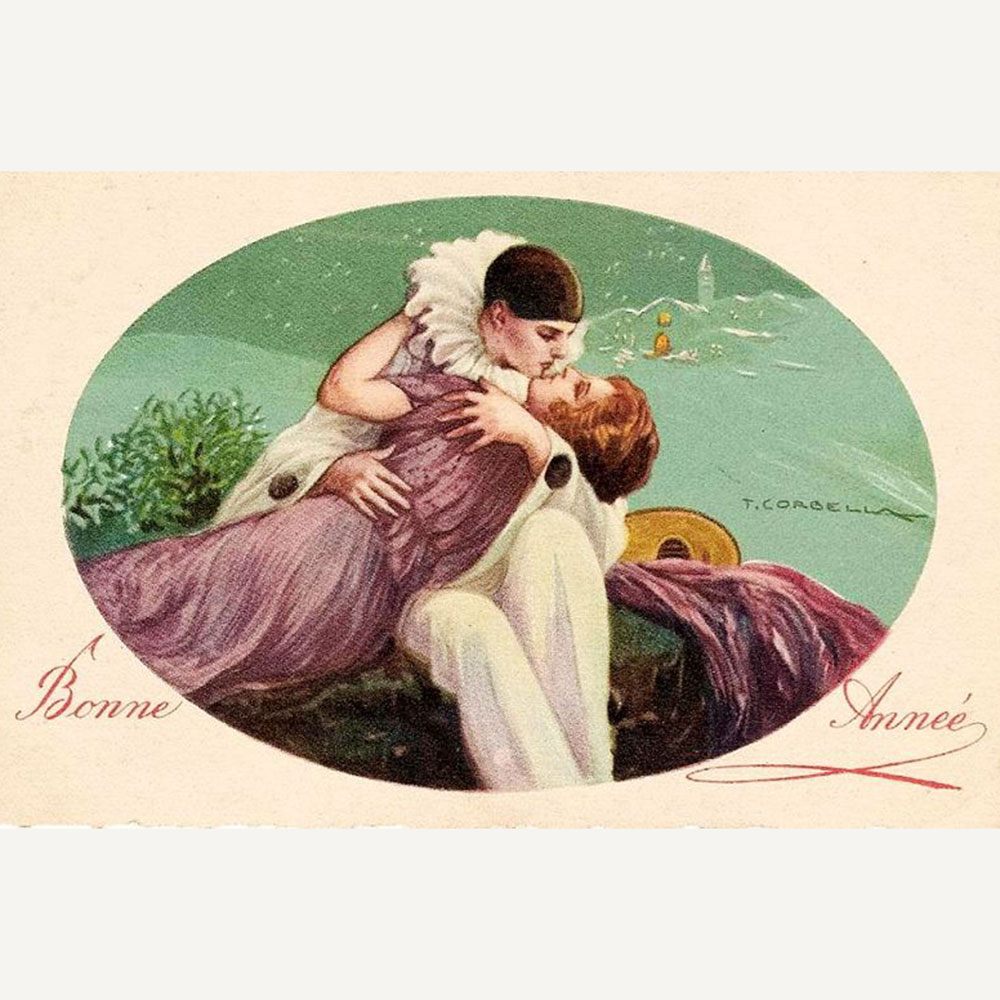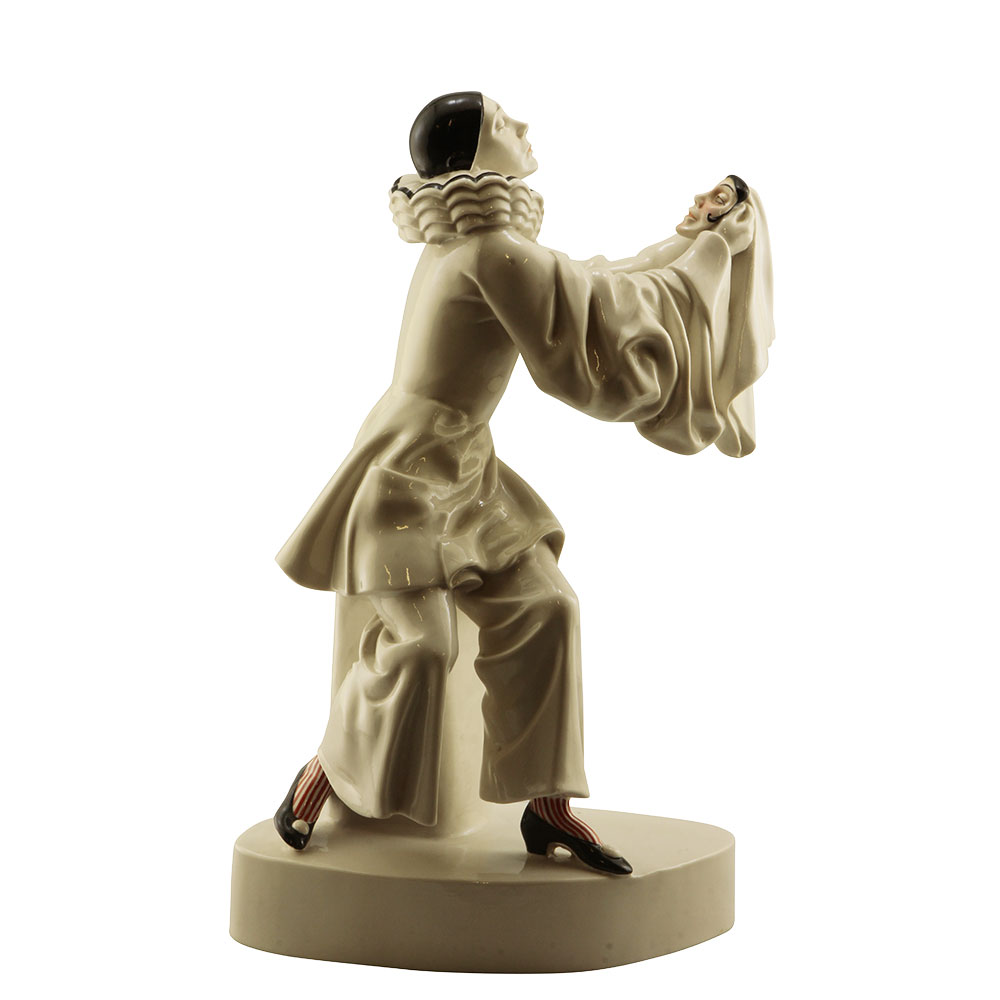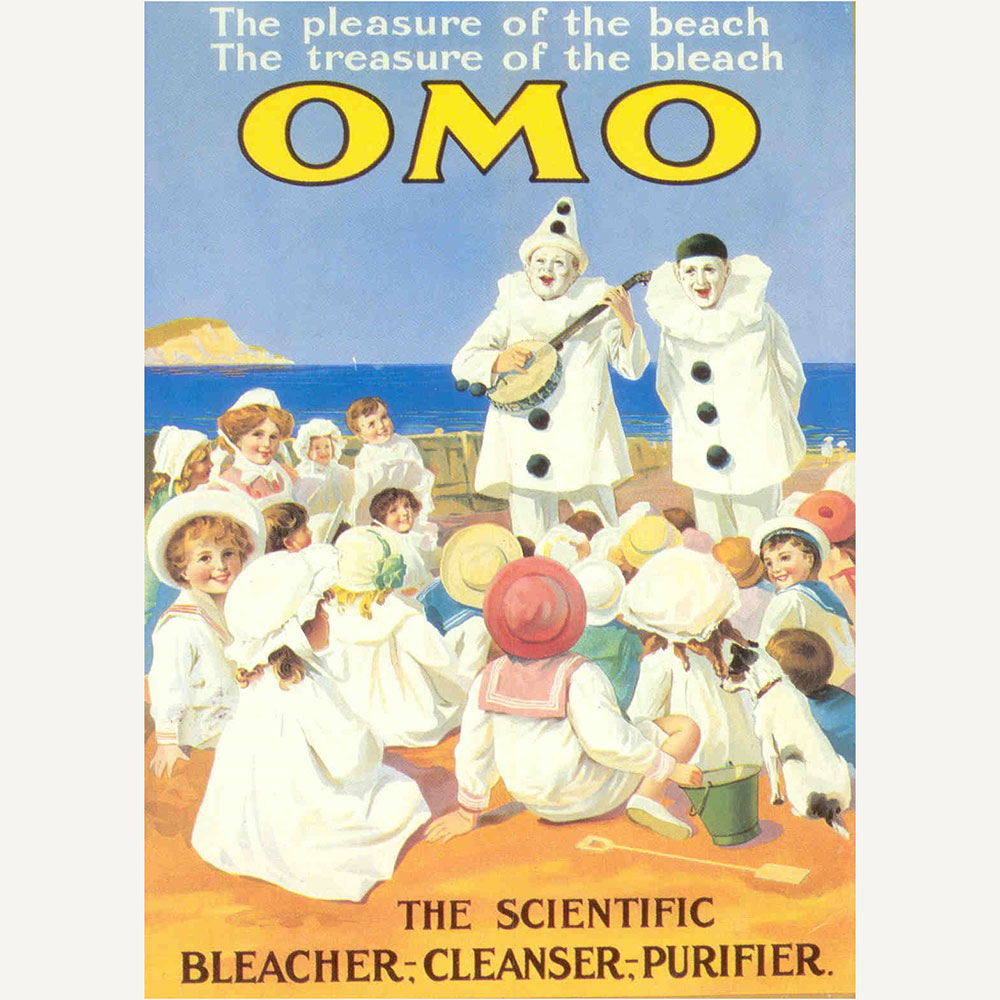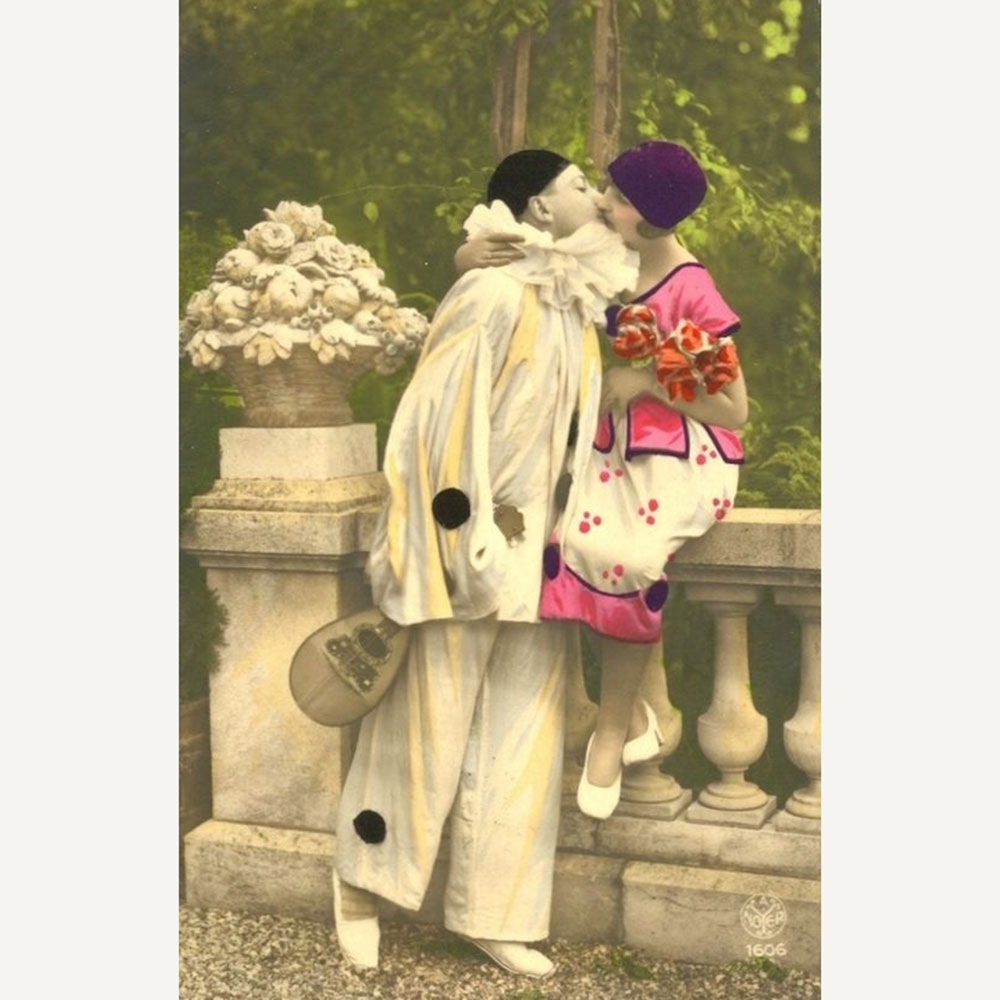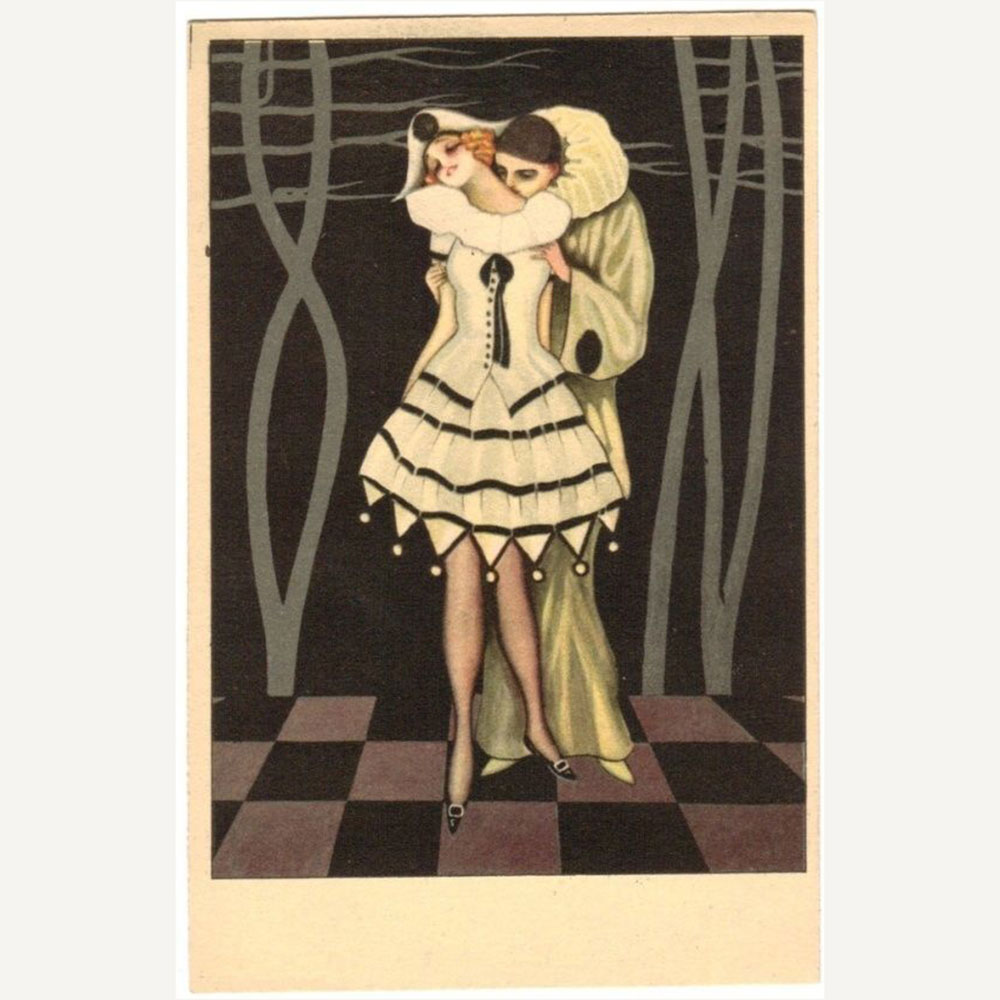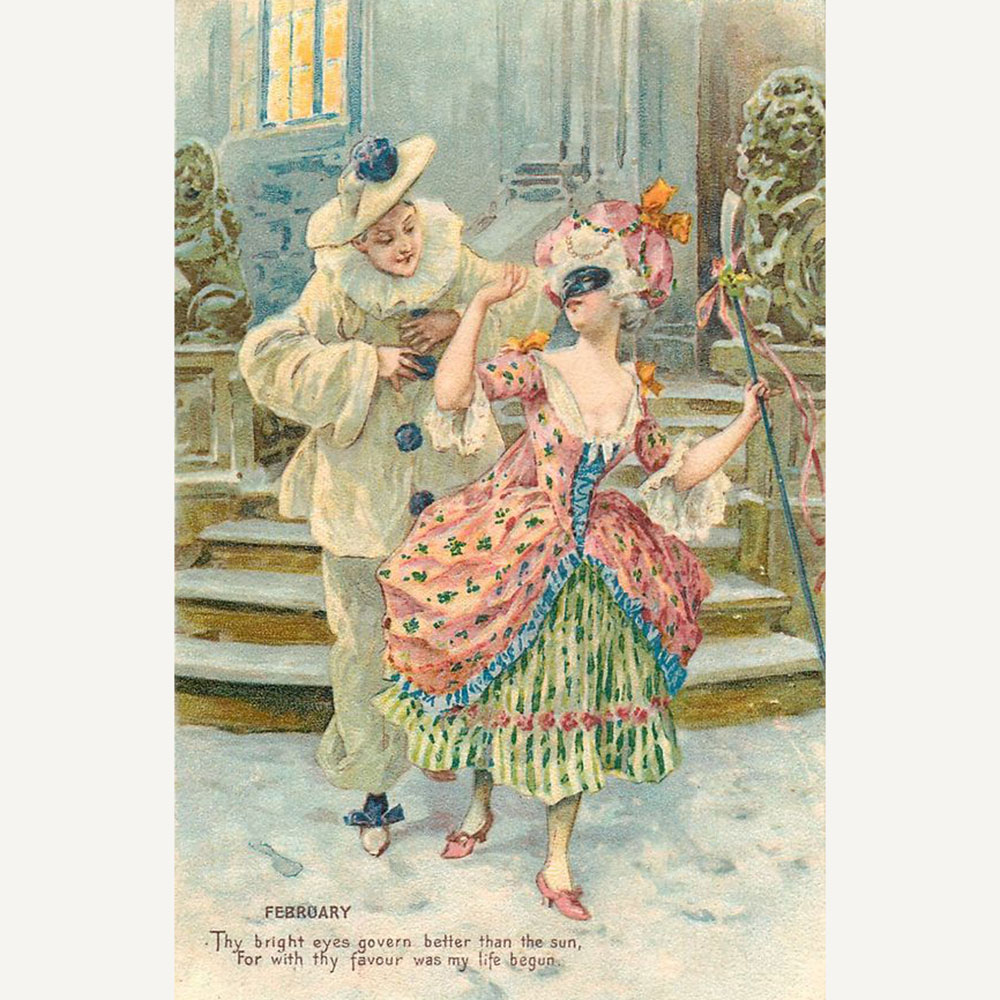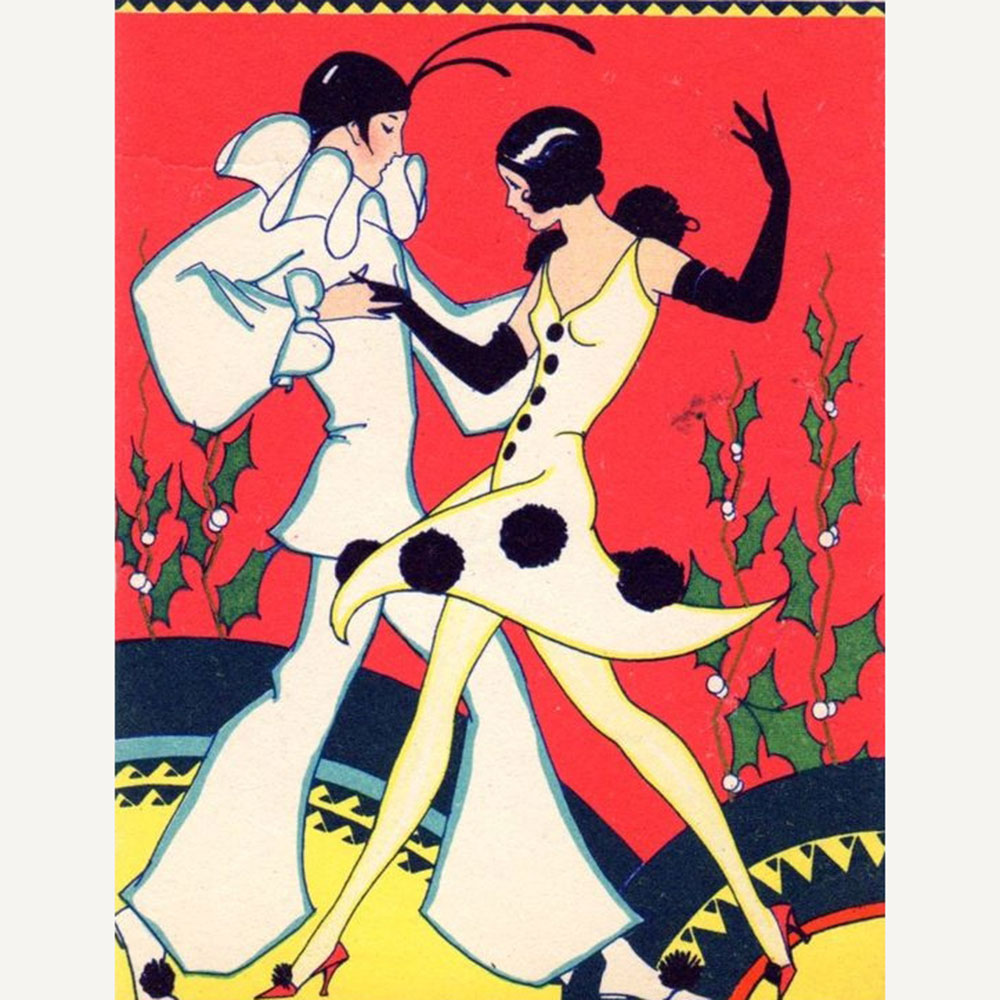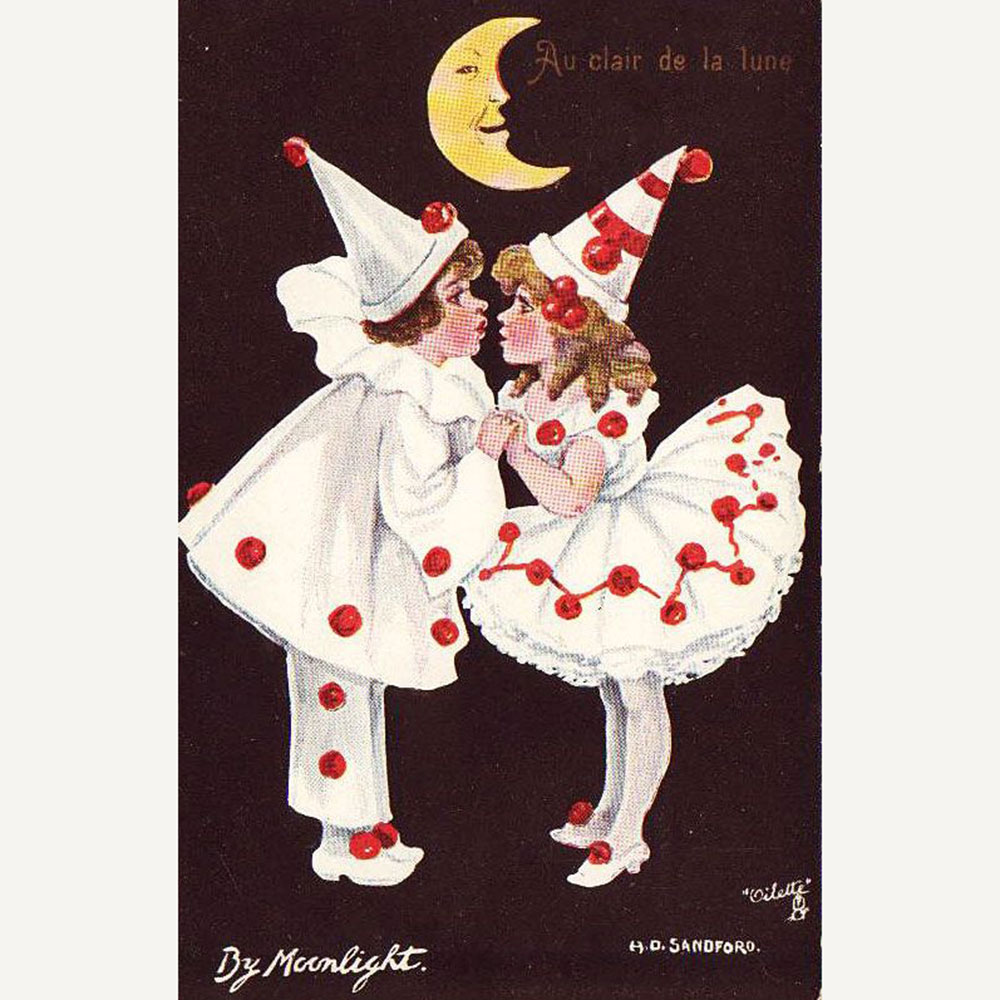With Valentine’s Day approaching we are highlighting the love stories from the Commedia dell’Arte which feature in our latest exhibition Carnival & Cabaret and its spectacular Lladró centerpiece. All the performances of the Italian comedy revolved around young lovers, the Innamorati, who are continually thwarted by their parents, notably Pantalone and Dottore, and they rely on their servants, the Zanni, to arrange their romantic trysts. Arlecchino or Harlequin is the most resourceful of the servants and pursues his own love interest, Colombina, often competing with the naive Pierrot (Pedrolino).
Harlequin is a poor character, wearing a colorful diamond-patched costume, remnants of richer dress, and he has inspired ceramic artists ever since European porcelain was developed in the early 18th century. Pierrot evolved into a melancholic lovesick clown, pining for Columbine who breaks his heart in favor of Harlequin. He inspired many famous French artists, such as Antoine Watteau in the 18th century, and later embodied the alter-ego of alienated artists like Pablo Picasso.
In England, the Commedia dell’Arte evolved into the Harlequinade performances of the early 1700s during which a mischievous, bawdy Harlequin became the romantic lead and won the love of a coquettish Columbine despite the resistance of Pantaloon and the Clown. Harlequinade performances were initially mimed but later included speaking roles and became part of a theatrical evening’s entertainment of drama, folklore and pantomime with Harlequin whacking his slapstick to create magical transformations during frantic chase scenes.
By 1800, the English Harlequinade had become a zany affair with Clown in the leading role, thanks to the acting skills of Joseph Grimaldi who stole the limelight at Drury Lane theatre. Grimaldi’s comic genius and dynamic energy are legendary and many of his tricks still feature in the repertoire of the modern circus clowns who are called Joey in his honor. Grimaldi’s Clown wore baggy clothes adorned with frills and spots and he painted his face with geometric patterns.
In the 20th century, troops of musicians in Pierrot costumes performed for holiday-makers at British beach resorts. Pierrot also became a familiar figure on magazine covers and in advertising for products as diverse as cigarettes and washing powder. Elements of his costume, notably the conical hat, ruff and pom-poms, later appeared in white clowns of the circus. The antics of Pierrot, Harlequin and Columbine also inspired party going revelers at the masquerade balls of the Art Deco era.
Related pages
Carnival & Cabaret
Carnival in Venice

